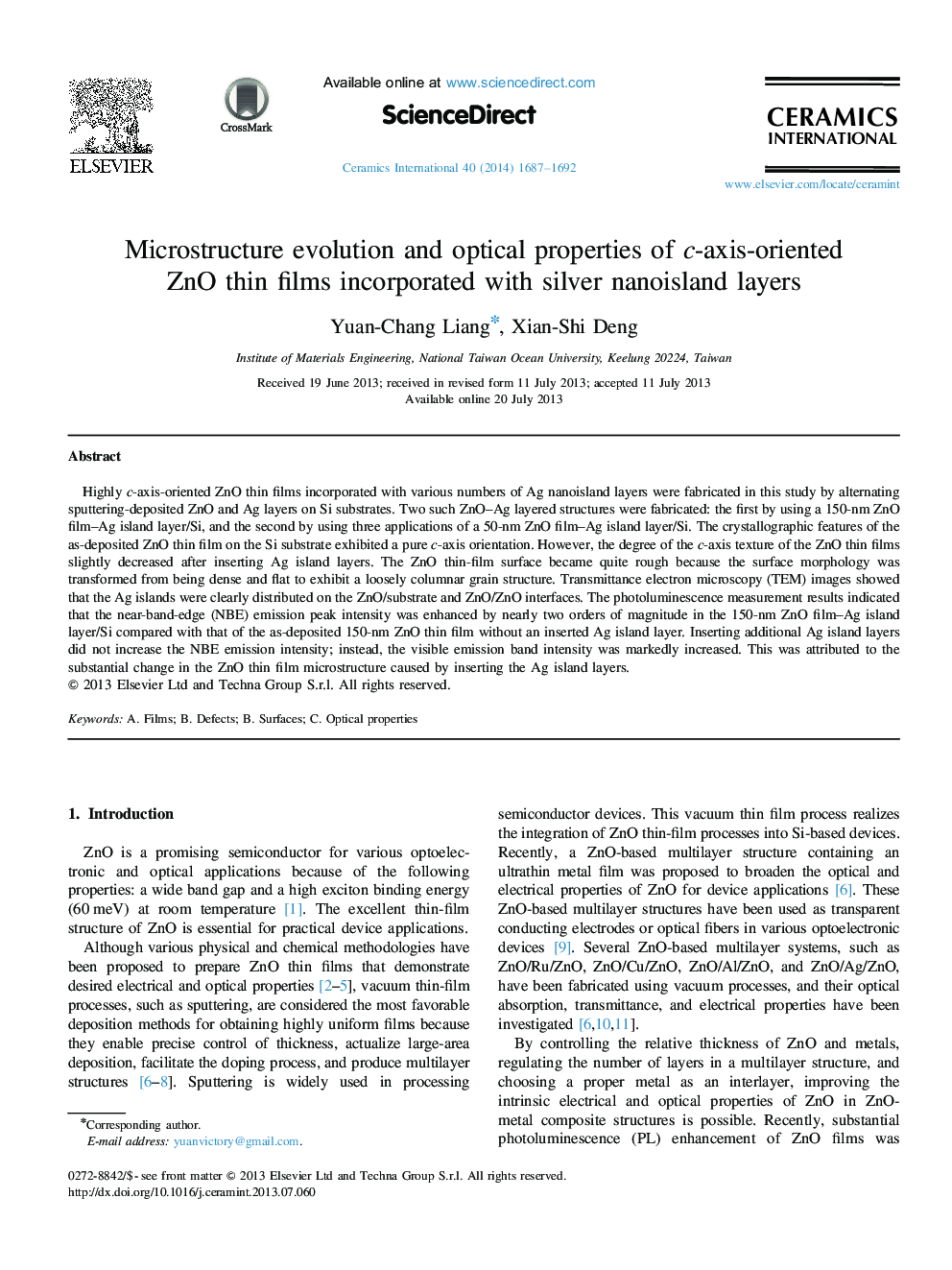| Article ID | Journal | Published Year | Pages | File Type |
|---|---|---|---|---|
| 1461859 | Ceramics International | 2014 | 6 Pages |
Highly c-axis-oriented ZnO thin films incorporated with various numbers of Ag nanoisland layers were fabricated in this study by alternating sputtering-deposited ZnO and Ag layers on Si substrates. Two such ZnO–Ag layered structures were fabricated: the first by using a 150-nm ZnO film–Ag island layer/Si, and the second by using three applications of a 50-nm ZnO film–Ag island layer/Si. The crystallographic features of the as-deposited ZnO thin film on the Si substrate exhibited a pure c-axis orientation. However, the degree of the c-axis texture of the ZnO thin films slightly decreased after inserting Ag island layers. The ZnO thin-film surface became quite rough because the surface morphology was transformed from being dense and flat to exhibit a loosely columnar grain structure. Transmittance electron microscopy (TEM) images showed that the Ag islands were clearly distributed on the ZnO/substrate and ZnO/ZnO interfaces. The photoluminescence measurement results indicated that the near-band-edge (NBE) emission peak intensity was enhanced by nearly two orders of magnitude in the 150-nm ZnO film–Ag island layer/Si compared with that of the as-deposited 150-nm ZnO thin film without an inserted Ag island layer. Inserting additional Ag island layers did not increase the NBE emission intensity; instead, the visible emission band intensity was markedly increased. This was attributed to the substantial change in the ZnO thin film microstructure caused by inserting the Ag island layers.
